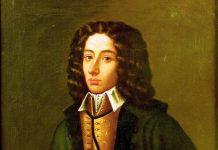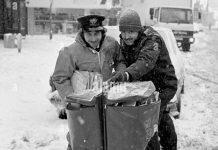Traveling around India can be a challenge, but the offer of a trip to Chennai, with its shopping and temples, made seeing the famous culture and religion it too difficult to pass up.
Chennai, formerly known as Madras, is the capital of Tamil Nadu state on the Coromandel Coast of the Bay of Bengal. At 181 sq. km., it is the fourth-largest city in India. The British, who developed it to become an important naval base, founded the city in the 17th century. It became the capital of the Madras Presidency in the 20th century.
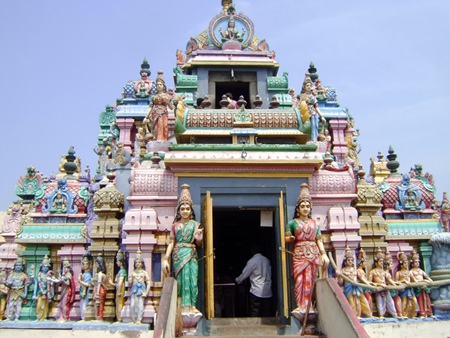 Ashtalakshmi Temple.
Ashtalakshmi Temple.
Its industries include automobile, hardware, healthcare products and software services. It is the third-largest exporter of software, behind only Bangalore and Hyderabad. It has one international airport, two major ports and is connected to other regions by five highways and two railway routes.
Chennai is a major center for music, art and culture. It hosts a large cultural event, the annual Madras Music Season, which includes performances by hundreds of artists. It is also an important center for Bharata Natyam, a classical dance that originated in Tamil Nadu and is the oldest dance in India. The Tamil film industry, known as “Kollywood” is based in the city. Chennai is also famous as the host to the only ATP World Tour tennis event held in India.
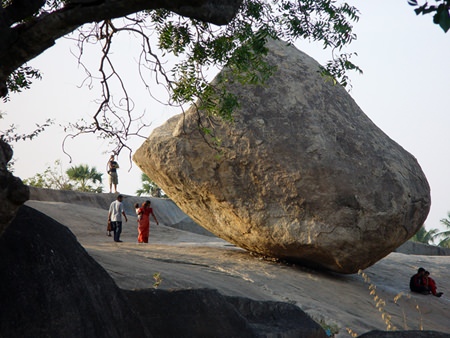 Krishna Ball.
Krishna Ball.
The tour, supported by Pattaya’s Massic Travel, saw our group travel via France’s Air Austral, which shares facilities at Suvarnabhumi International Airport with Thai Airways Lounges, for Premium Economy Class. Even in economy class, seats were comfortable and food included French dishes and sparkling wine.
Following the 3.5-hour flight, an agent from Indo-Asia Tour greeted the travelers and provided a solid briefing. Hotel security checked bags, creating confidence for a safe stay. The Courtyard by Marriott, Chennai offered mango drinks on arrival, offering refreshment before heading out for shopping.
Many of the shops offered the same goods as can be found in Thailand: cosmetics, creams, watches, and the like. But what attracted our intention the most were the colorful Indian fashion items that came in sets: tops, trousers and shawls. Each cost less than 2,000 baht with good-quality leggings costing about 200 baht.
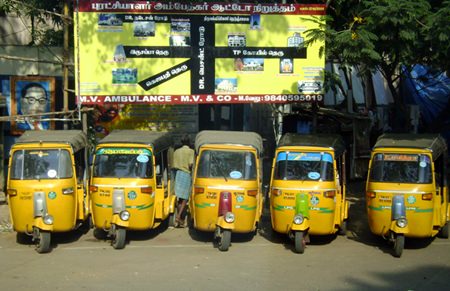 Auto Rickshaw.
Auto Rickshaw.
Dinner back at the hotel consisted of naan bread, bean curry, fired noodles, Indian clear soup, fried vegetables and crisp rice.
The first full day would see the group visit the first of many Hindu temples. I dressed in Indian attire, but added sunglasses and hat as the weather was hotter than in Thailand with no wind.
The first stop on the air-conditioned bus was Kapaleashwarar Temple, a house of Shiva located in Mylapore in the middle of Chennai. We were fascinated with the offerings that people were selling in front of the temple, especially the big garlands made of holy basil leaves because they believe that holy basil is the favorite plant of Shiva.
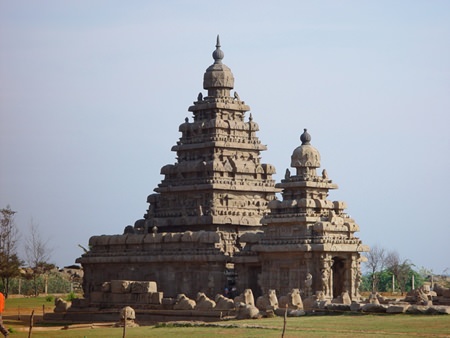 Shore Temple, Mahabalipuram.
Shore Temple, Mahabalipuram.
I bought a basket of white lotuses for 90 rupees, or about 40-50 baht, to worship Shiva. Inside the temple, I saw people worshiping Shiva with great devotion by lying prostrate on the floor three times in front of the Shiva statue to show their most humility.
In front of the temple door were Brahmins who represented the Shiva to bless people and mark their forehead with signs of worship. The red letter “U” marked on forehead denotes the worshiping for Narayana, while three lines drawn horizontally across the forehead denotes the worshipping for Shiva.
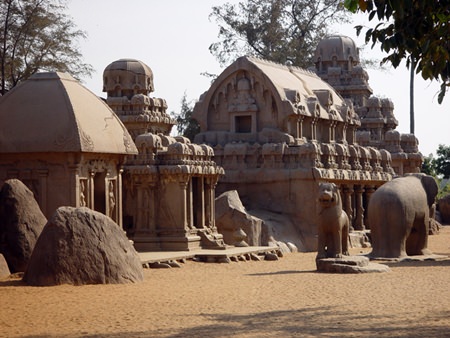 Pancha Rathas, Mahabalipuram.
Pancha Rathas, Mahabalipuram.
The next stop was Mahabalipuram in the state of Tamil Nadu and we went to see the Pancha Rathas monument complex. Each monument in the Pancha Rathas is carved from one single large piece of stone.
Then we went to the Varaha Cave Temple where there are many interesting stone-carved sculptures of gods and mythical figures. Many people came to visit the site continuously either in couples or groups of families. The locals were very friendly and always smiled, some even asking to have their photo taken with us as a remembrance.
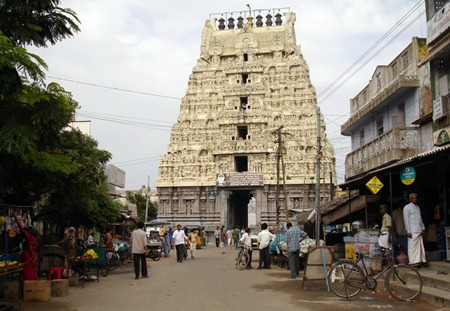 Kamakshi Amman Temple, Kanchipuram.
Kamakshi Amman Temple, Kanchipuram.
Despite the hot weather, we enjoyed the scenery and were captivated by the works of fine art there for hours until it was the time to leave for the Hotel. The dinner prepared to welcome us was special, cooked in a combination of Indian and Chinese styles, but not too oily. There were fried vegetables, boiled shrimp in coconut milk, fried chicken that tasted like teriyaki and many more dishes.
The third day, the tour guide took us to the Shore Temple, which was built by the third king of the Pallava Dynasty located by the sea.
The temple is a complex of three stone temples that have been hit by waves for more than 1,300 years, causing deterioration to the sculptures in the temple. When the 2004 tsunami occurred, it brought up a lot of antiques from the bottom of the sea, as the temple was initially identified as part of the Seven Pagodas, of which six remain submerged.
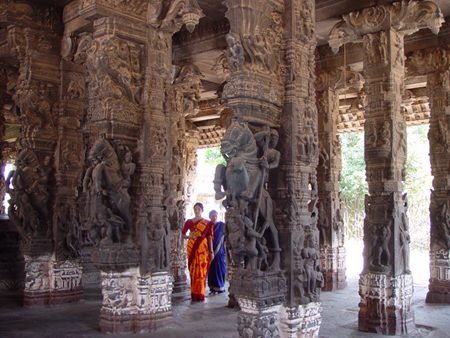 Kanchipuram Varadaraja Temple.
Kanchipuram Varadaraja Temple.
The incidents made the temple very famous worldwide. The atmosphere was peaceful and, because it was located by the sea, it made the visit quite relaxing.
Next, we went to the Vaikunta Perumal Temple, also built by the Pallava Dynasty in the 8th century. Its architecture is very distinctive and so stunning that it is used as a prototype for many later temples. Sculptures on the temple walls narrate the history of the events of ancient Pallava history for young generation to study.
The next destination was the Sri Ekambaranathar Temple, or the Mango Temple as Thai people call it. Legend has it that Shiva gave the holy mango tree to be planted on earth and that the fruit of each of its branches give different flavors.
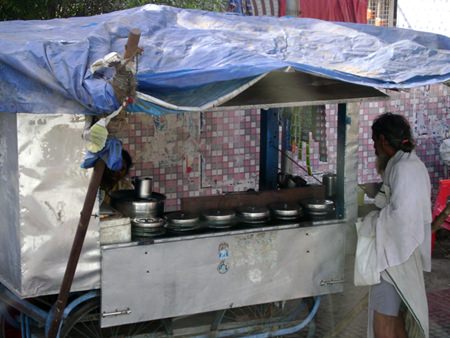 One of the many roadside tea shops.
One of the many roadside tea shops.
One of the temple’s main features is the array of 1,008 Siva lingams. According to legend, Parvati, the consort of Shiva, was doing penance under the temple’s ancient mango tree so that she could get married with Shiva when the temple was flooded. So Parvati embraced the Siva lingam to protect it from being damaged. Therefore the sculptures of Shiva and Parvati are placed under the mango tree where many people come to worship the sculptures and pray for luck and love.
From the temple, we traveled another five hours to Tirupati to worship Narayana the following day. Along the way to the hotel we saw that almost every house had drawn various beautiful patterns on their yard with colorful powder.
Residents there normally get up early to draw with kolam powder on their yard for auspiciousness in life. In earlier times, people drew with rice and birds would come to eat them so it was like a creative way of making merit.
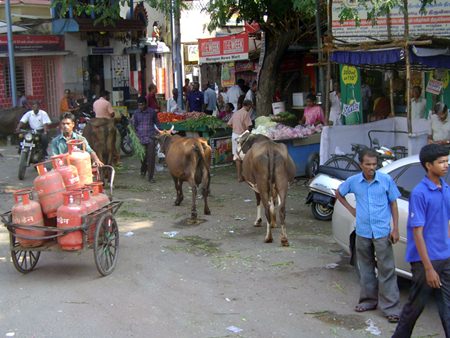 Daily life of the local people.
Daily life of the local people.
Dinner at the new hotel was biryani mutton and roti served with hot and very strong spicy-smelling paneer curry, followed with gulab jamun dessert, which is brown saturated balls in sugar syrup.
Many people who have not been to India may think it is difficult to find good and clean hotels, but that is totally wrong. Each of hotels that we stayed, including those I haven’t mentioned – the Fortune Select Grand Ridge in Tirupati and MGM Beach Resorts in Muttukadu in Chennai – were similar to hotels in Pattaya; located on private beaches, with king-size beds, clean and with friendly service.
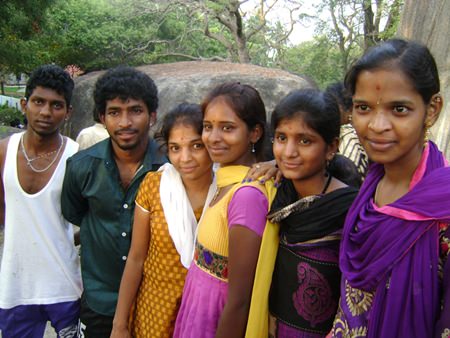 South Indian kids day out.
South Indian kids day out.
The fourth day began at 5 a.m. with a trip up to the hill-top Tirumala Venkateswara temple. Here, traditional dress is required. Men wear kurta, a loose long shirt with long sleeves, and women dress in salwa, also a loose long shirt with long sleeves with trousers and a shawl.
With thousands of people visiting the temple daily, preparation is important. Our group was transferred into a smaller bus because the hill is very steep. Once we got to the temple, we saw many people, including children, with shaved heads. They do so to make their vows to the gods.
Before entering the holy site, visitors must leave shoes outside. The path through was narrow and very crowded. The closer we got to Narayana, the louder people shouted “om Govinda.” For nearly five hours we walked up the steps before reaching the altar where we stopped and prayed to Narayana for blessings.
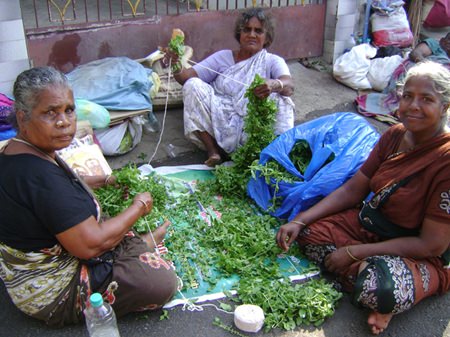 Preparing the basil leaves to pay respect to God Shiva.
Preparing the basil leaves to pay respect to God Shiva.
Less than three seconds later, we were swept out by the crowd again.
When I looked around I saw many people remain sitting still to pray, some kneeling prostrate to the wall and some embracing each other to celebrate with delight that they got to this holy place.
The final day was the journey home, starting at 2 a.m. for the bus ride to the airport. The group agreed the food was good, the locals nice and shopping inexpensive. It certainly won’t be the last voyage to India.
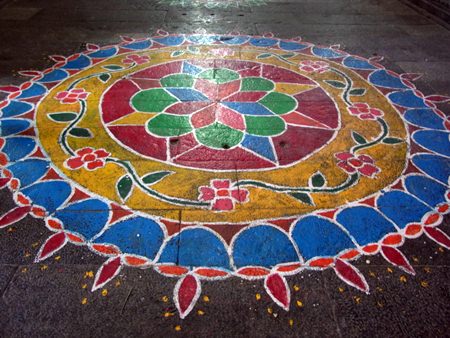 Kolam, a form of painting that is drawn by using rice powder chalk, chalk powder, white rock powder and often using naturally synthetically colored powders.
Kolam, a form of painting that is drawn by using rice powder chalk, chalk powder, white rock powder and often using naturally synthetically colored powders.
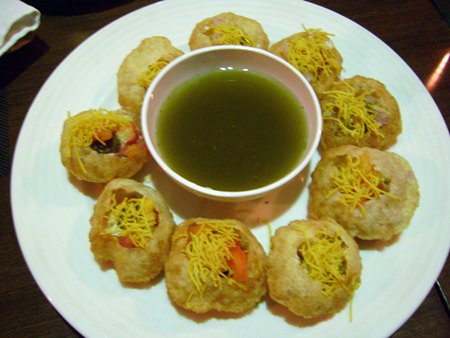 Famous Gol Gappa.
Famous Gol Gappa.
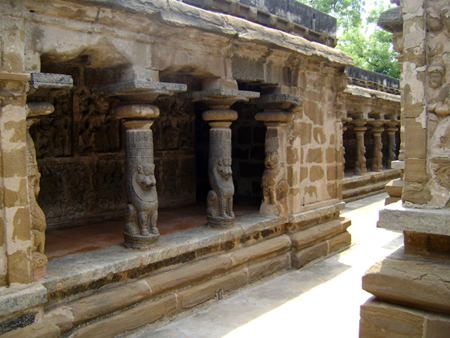 Vaikunta Perumal.
Vaikunta Perumal.
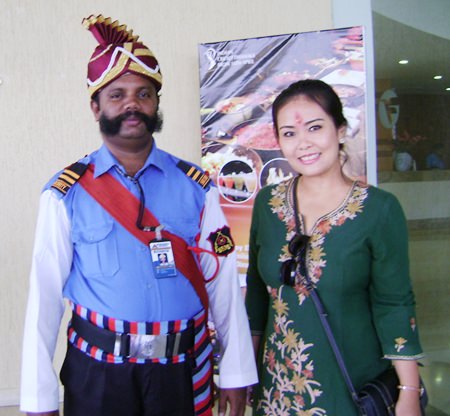 The writer with the guard at the hotel.
The writer with the guard at the hotel.
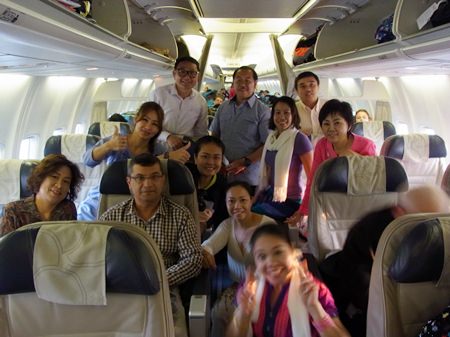 Getting ready to board the flight on Air Austral.
Getting ready to board the flight on Air Austral.
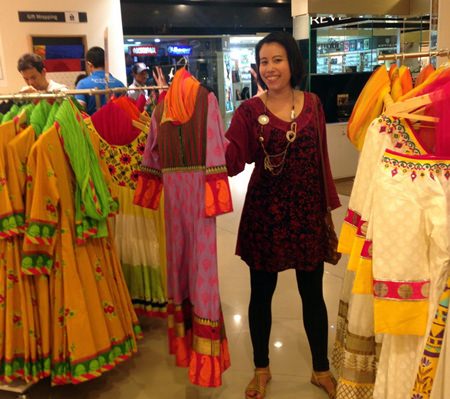 Shopping for colorful Indian dress.
Shopping for colorful Indian dress.
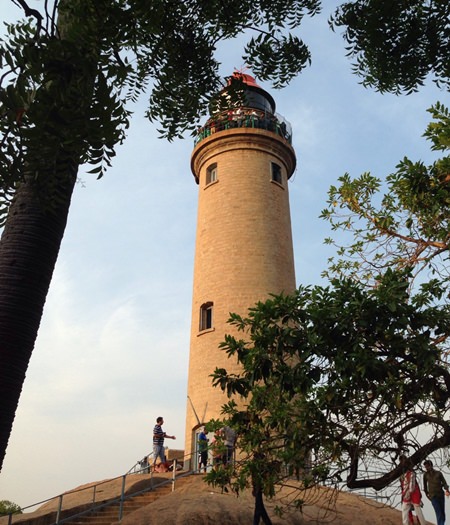 Lighthouse at Mahabalipuram.
Lighthouse at Mahabalipuram.
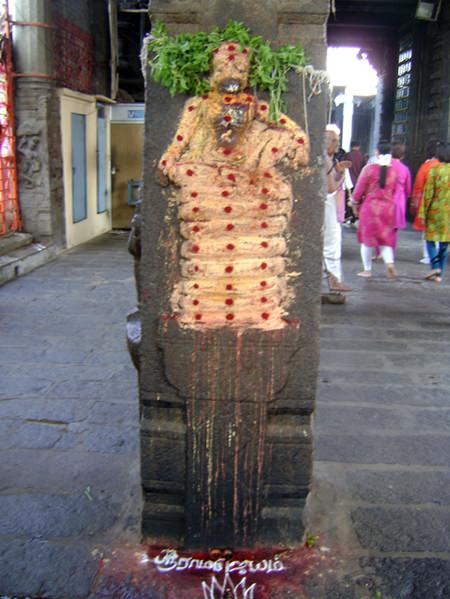 Sacred sculpture can be seen in many areas.
Sacred sculpture can be seen in many areas.
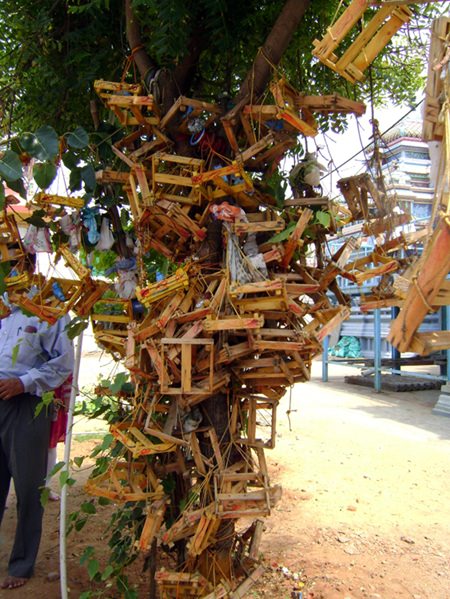 Paying respect with wood and asking for children.
Paying respect with wood and asking for children.


